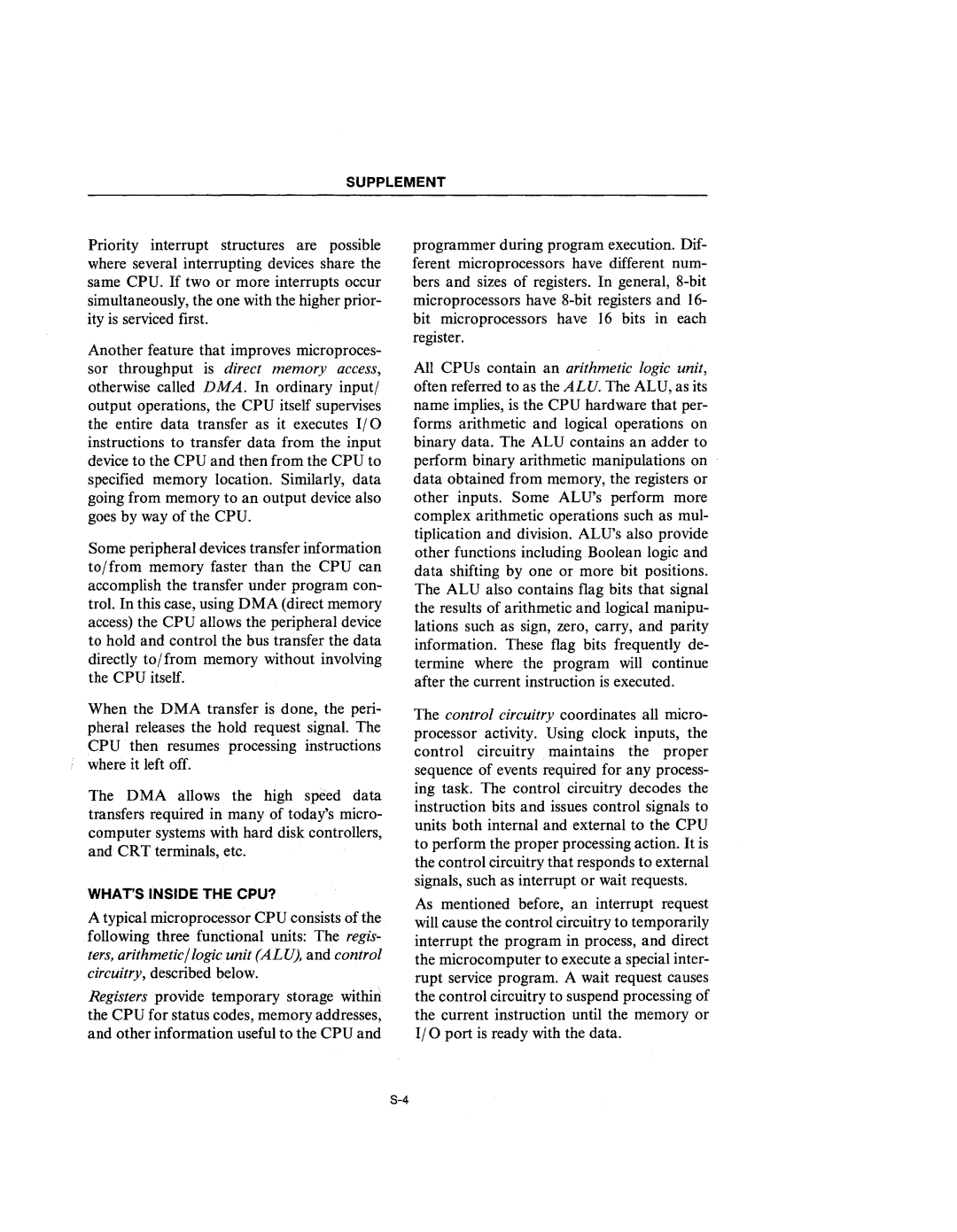
SUPPLEMENT
Priority interrupt structures are possible where several interrupting devices share the same CPU. If two or more interrupts occur simultaneously, the one with the higher prior- ity is serviced first.
Another feature that improves microproces- sor throughput is direct memory access, otherwise called DMA. In ordinary input/ output operations, the CPU itself supervises the entire data transfer as it executes I/O instructions to transfer data from the input device to the CPU and then from the CPU to specified memory location. Similarly, data going from memory to an output device also goes by way of the CPU.
Some peripheral devices transfer information to/from memory faster than the CPU can accomplish the transfer under program con- trol. In this case, using DMA (direct memory access) the CPU allows the peripheral device to hold and control the bus transfer the data directly to/from memory without involving the CPU itself.
When the DMA transfer is done, the peri- pheral releases the hold request signal. The CPU then resumes processing instructions where it left off.
The DMA allows the high speed data transfers required in many of today's micro- computer systems with hard disk controllers, and CRT terminals, etc.
WHAT'SINSIDE THE CPU?
A typical microprocessor CPU consists of the. following three functional units: The regis- ters, arithmetic/logicunit (ALU), and control circuitry, described below.
Registers provide temporary storage withirt the CPU for status codes, memory addresses, and other information useful to the CPU and
programmer during program execution. Dif- ferent microprocessors have different num- bers and sizes of registers. In general,
All CPUs contain an arithmetic logic unit, often referred to as the ALU. The ALU, as its name implies, is the CPU hardware that per- forms arithmetic and logical operations on binary data. The ALU contains an adder to perform binary arithmetic manipUlations on data obtained from memory, the registers or other inputs. Some ALU's perform more complex arithmetic operations such as mul- tiplication and division. ALU's also provide other functions including Boolean logic and data shifting by one or more bit positions. The ALU also contains flag bits that signal the results of arithmetic and logical manipu- lations such as sign, zero, carry, and parity information. These flag bits frequently de- termine where the program will continue after the current instruction is executed.
The control circuitry coordinates all micro- processor activity. Using clock inputs, the control circuitry maintains the proper sequence of events required for any process- ing task. The control circuitry decodes the instruction bits and issues control signals to units both internal and external to the CPU to perform the proper processing action. It is the control circuitry that responds to external signals, such as interrupt or wait requests.
As mentioned before, an interrupt request will cause the control circuitry to temporarily interrupt the program in process, and direct the microcomputer to execute a special inter- rupt service program. A wait request causes the control circuitry to suspend processing of the current instruction until the memory or I/O port is ready with the data.
